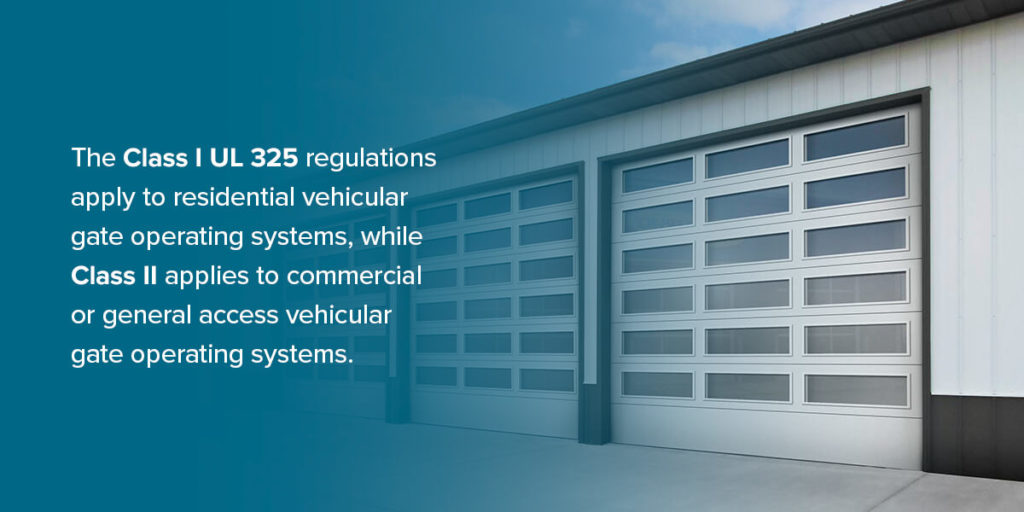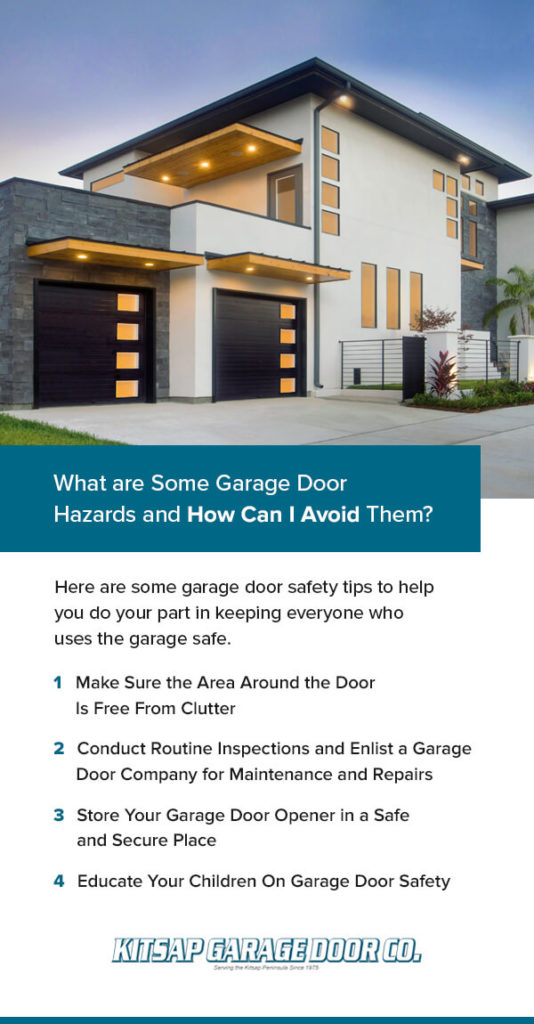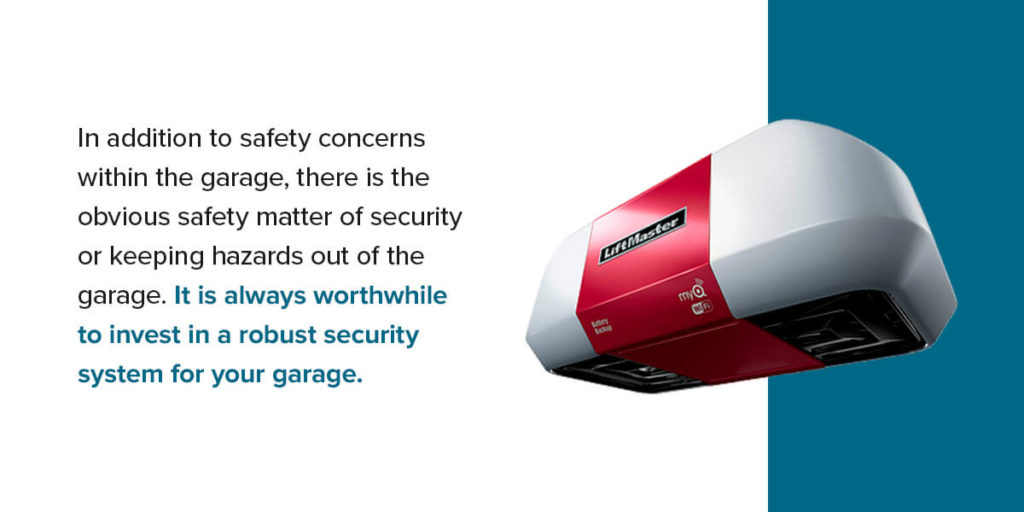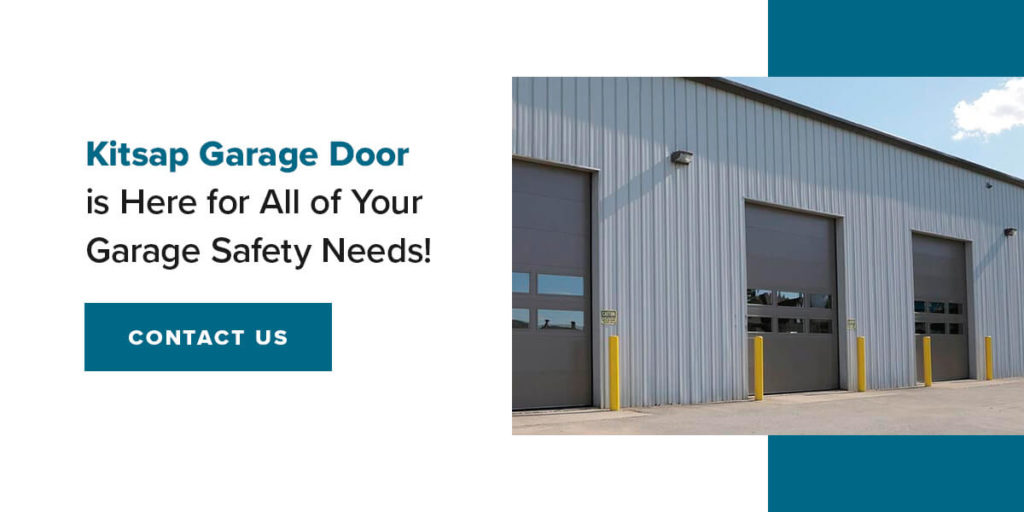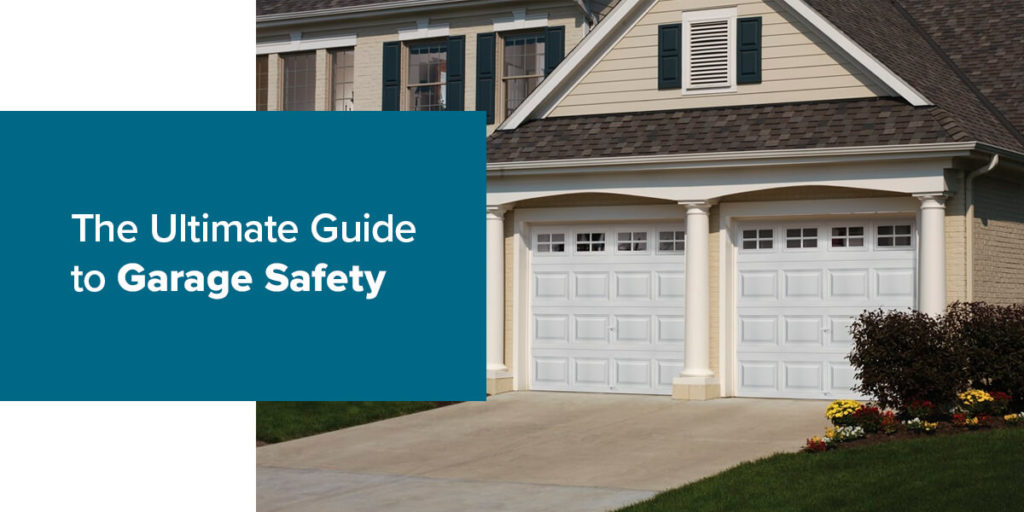
The Ultimate Guide to Garage Safety
Your garage keeps your vehicles and possessions safe from both the elements and the potentially nefarious intentions of passersby in the middle of the night. While the security that a garage provides is an invaluable asset, that security loses its relevance if it does not keep you and everyone else who uses your garage safe as well!
According to the National Electonic Injury Surveillance System (NEISS) with the U.S. Consumer Product Safety Commission (CPSC), garage door accidents cause more than 15,000 injuries each year. The most common garage door injuries are situations where individuals are either pinched or crushed by a garage door, and less than 100 of those injuries are due to personal negligence. The most disturbing aspect of those numbers is that most of those injuries are sustained by children.
With that in mind, garage safety is a big deal! Though the number of garage door-associated injuries and deaths have been significantly reduced through evolving regulations around garage door manufacturing, safe practices around garage doors remain as important as ever, especially as smart technology advances and necessitates further adjustments in garage door safety regulations.
We are happy to oblige if you are looking for an in-depth guide on garage safety! We hope the information we provide in this guide will prevent garage door injuries and help you transform your garage into a veritable safe zone.
What are the Garage Door Safety Requirements?
The nationwide requirements for garage door safety are outlined in UL 325 to prevent garage door malfunctions that could lead to damaged property, injury, or worse. UL 325 refers to the government- and industry-supported safety protocols enforced by Underwriters Laboratories, now known as UL, LLC. UL is a global safety science company that tests and certifies a vast array of different products through exhaustive safety research and scientific expertise for the purpose of developing standards that measure and promote environmental safety and efficiency, both at home and the workplace.
The UL 325 regulation applies not only to garage doors but also to any door, drapery, gate, louver or window operating system with a power output of 600 volts or less. There are four different classes of regulations with UL 325, but only Class I and Class II apply to garage doors. The Class I UL 325 regulations apply to residential vehicular gate operating systems, while Class II applies to commercial or general access vehicular gate operating systems. The remaining two classes of regulations are for restricted access and industrial sites.
Class I and II UL 325 Regulations
Class I and II UL 325 regulations are specifically designed for vehicular gate operators or systems used in residential buildings with garages, parking areas or homes with one to four family dwellings on the property. Class II regulations are generally the same as for Class I. However, they are designed for commercial buildings or multi-family housing units with five or more family dwellings on site. Concerning the actual regulations outlined in UL 325, each class has a required primary and secondary device.
Primary Entrapment Protection Device
The primary device requirements for Class I and II gate operators and systems include either an inherent entrapment sensor or a zero speed sensor installed. Such sensors function to prevent the garage door from crushing or pinching a person or object. The primary device must also have a built-in response time when sensing an obstruction of a maximum of 2 seconds, during which it must stop and reverse its movement in either direction to prevent injury to any person trapped underneath the door or damage to property.
Secondary Entrapment Protection Device
In addition to the primary device, Class I and II gate operators and systems must also have two secondary devices of either a photoelectric (non-contact) sensor, an edge device (contact sensor), or an actuating device that requires continuous pressure when opening or closing the door. UL 325 also stipulates that any given single garage door must have different primary and secondary devices. As such, having two inherent entrapment sensors on the garage door does not meet UL 325 standards for primary and secondary devices, as there must be two different security systems in place.
Additional Requirements
In the case that the entrapment sensor detects two subsequent obstructions, Class I and II garage doors must be equipped with an audio alarm to alert the individual operating the door of an obstruction. They also must be fitted with a manual release cord that allows you to disconnect the door from the operating motor in the event of an emergency.
Further, Class I and II garage doors cannot move faster than one foot per second if the operating system pulls more than 75 pounds. This latter safety protocol is intended to prevent any person from being struck by the door or gate while also ensuring the security of the area that the door or gate encloses.
What are Some Garage Door Hazards and How Can I Avoid Them?
The first thing you can do to avoid garage door hazards is familiarizing yourself with the UL 325 garage door safety regulations and doing your best to abide by them. The good news for you is that UL regulations for garage doors predominantly apply to the manufacturing stage of the garage door. So your main responsibility in following UL 325 garage door safety requirements is to purchase or upgrade to a garage door that meets the UL standard.
That said, garage door safety may begin in the factory, but it does not end there! Even after you have purchased your UL-approved garage door and flawlessly installed it or had professionals do so, potential hazards still abound that require your commitment to safe garage door practices.
In that light, here are some garage door safety tips to help you do your part in keeping everyone who uses the garage safe.
Make Sure the Area Around the Door Is Free From Clutter
Clutter around the garage door can create several hazardous possibilities. Not only can it cause the garage door to frequently detect obstructions, which may lead to annoyance at the safety mechanisms and a “boy-who-cried-wolf” situation, but it can also be a tripping hazard, which could be especially dangerous if the garage door is closing at the same time that a person trips and falls. With that in mind, make sure you are vigilant about cleaning up any clutter lying around the garage door to ensure the safety mechanisms operate efficiently and as intended.
Conduct Routine Inspections and Enlist a Garage Door Company for Maintenance and Repairs
A malfunctioning safety mechanism on your garage door can have disastrous consequences. You should conduct routine inspections on the entrapment protection sensors, auto-reverse functions, and force settings on your garage door. Test each safety mechanism in a safe and controlled manner to ensure they are operating as intended at least once a month. A safe way to test the safety mechanisms could involve placing a two-by-four on the ground underneath the door to test the auto-reverse or entrapment protection function.
If anything concerning comes up from your inspection, such as a glitch or unresponsive feature, don’t hesitate to contact a garage door company like Kitsap Garage Door Co. for repairs and maintenance to prevent the malfunction from causing harm. A professional garage door maintenance company will know the ideal solution to any malfunction your garage door safety mechanisms require, whether that involves repairing the existing safety mechanism, replacing it or upgrading to a more durable and effective safety mechanism.
Store Your Garage Door Opener in a Safe and Secure Place
If your garage door opener falls into the wrong hands, such as those of a toddler or young child, or you cannot find it when you need to stop a potentially dangerous situation with the garage door, an avoidable mishap could occur. Make sure you store your garage opener in a place where it is easy for you to find but out of the reach of young children. In addition, responsibly keeping the opener in a secure location could also prevent a potential break-and-enter situation, should the opener be misplaced in a public or open area.
Educate Your Children On Garage Door Safety
On that note, young kids could have an awful lot of fun with a garage door if they don’t know any better! Such adventure with the garage door could have serious consequences, as a garage door is not meant for “horsing around,” as one might say. Since children are often the victims of garage door accidents, there is added importance to teaching them how to stay safe around garage doors.
With that in mind, make sure your children or any young kids who might be playing in the vicinity of the garage door know both the importance and the particularities of garage door safety. Make sure your children know not to stand, run, or play underneath a garage door, especially if it is in use, and remind them to keep their hands and fingers free from the garage door if it is moving to avoid getting their fingers caught in the panels coming together as the door closes.
What Kind of Garage Door Safety Features are Available?
Fortunately, modern garage doors are manufactured with several available safety features to prevent injury and property damage. Some of these include:
Auto-Reverse Capabilities
Auto-reverse functions on garage doors are not exactly new, having been standard on all automatic garage doors since 1991. However, they remain an essential safety feature to this day. They consist of a built-in sensor that detects any resistance, no matter how slight, from an object, person, or pet caught underneath the door as it descends. Once the sensor detects the resistance, it automatically reverses to prevent injury or damage to the obstruction source.
Photo Eyes
Photo eyes, which you may have heard referred to as electric eyes or photo eye sensors, have been standard for garage door manufacturing since 1993. They are small cameras that sit approximately six inches above the ground on both sides of the garage door and ensure the garage door reverses direction whenever any object, person or pet crosses the door’s path.
Photo eyes are a great safety feature for garage doors. However, some things to watch out for with photo eye sensors are if the cameras are misaligned or the lenses are dirty. In either case, the sensors may prevent the garage door from closing and incorrectly assume something is blocking the garage door’s path.
Pinch-Resistant Panels
Newer garage doors typically come with pinch-resistant panels. With older garage doors, a small space is created between the panels as they fold together and close, which has been known to result in pinched hands or fingers causing serious injury. To combat this, pinch-resistant panels roll over each other in ways that leave less of a gap for hands and fingers to get caught in.
Manual Release
All garage doors come with a manual release, also known as a mechanical release, usually in the form of a red string with a handle that hangs down from the ceiling near the motor. The primary purpose of a mechanical release is to allow you to manually open the garage door in an emergency where someone is trapped underneath the door and the auto-reverse and entrapment protection devices are malfunctioning. Besides that integral purpose, however, they can also be helpful in power outages when you need to open the garage door.
Additional Garage Door Safety Tips
A few basic safety tips can keep any risk of injury to minimum, including:
Store Any Hazardous Materials, Sharp Instruments, or Power Tools in a Safe and Secure Space
This tip is especially important if young kids or vulnerable people frequent the garage space, as they may be curious or unaware of the dangers associated with hazardous materials, power tools and sharp instruments. That said, secure storage of such items is vital for any individual, as injuries can occur even to those who are aware of the associated dangers due to improper storage.
Make sure you store each material and item according to any of their specifications and in such a way that there will be little to no risk of them falling and injuring an unsuspecting person. Likewise, ensure the storage space is secure and well-anchored to prevent any collapse or falling items.
Keep Your Garage and Garage Floor Clean
The last thing you want your garage to turn into is an obstacle course with unseen hazards. As such, make sure you regularly clean your garage from clutter, including any spills on the floor that could lead to slipping hazards. If you have old chemicals, paints or frayed electrical cords that are just taking up space, free your mind from the clutter and trash or recycle them where it is possible to do so. Additionally, make sure you have proper lighting in the garage so you can see where you are going!
Install Security Upgrades
In addition to safety concerns within the garage, there is the obvious safety matter of security or keeping hazards out of the garage. It is always worthwhile to invest in a robust security system for your garage. Some beneficial security upgrades to consider include:
- User-specific or one-time passcodes
- Smart locks and apps that enable you to open and close the garage remotely
- Install motion-activated cameras inside and outside of the garage — with smart apps connected to the cameras, you will also be immediately alerted of suspicious activity
- Upgrade your garage door opener if you are using an outdated version, which can make your garage more vulnerable to burglary
- Install an alarm system if your garage is broken into
Kitsap Garage Door is Here for All of Your Garage Safety Needs!
Whenever you have issues with your garage door, the safest thing you can do is call a professional garage door service for repairs. Whether you need maintenance on your garage door, advice on how to improve the safety of your garage or are looking to upgrade your current garage door operating system, our technicians at Kitsap Garage Door can provide you with what you need at a moment’s notice! We have served the area of Kitsap Peninsula for over 45 years with an uncompromising commitment to quality and excellence.
Call us today for a free estimate or same-day services for any order placed by 10:00 am!


